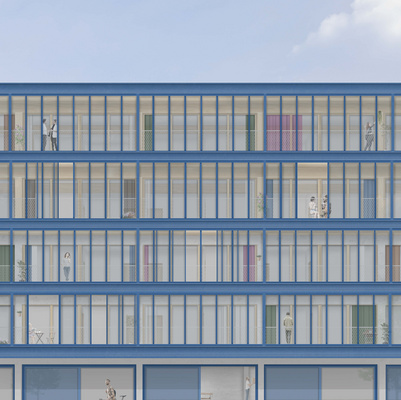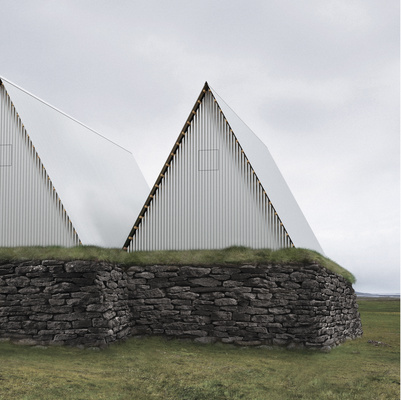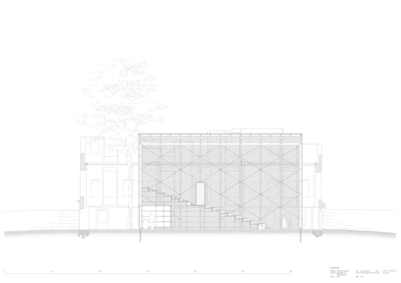The project Stenriket (The realm of stone) is set on the island Malmön located in the Swedish westcoast. A region named Bohuslän which is recognized for its maritime culture and rocky environments. The island served as a quarry for extracting granite for roads and buildingelements, an industry lasting from the mid-1800's to 1977. The entire region of Bohuslän has rapidly transformed into a summer paradise for luxury vacation and a extravagant jet-set culture during the last twenty years, leaving little respect for the picturesque scenery which has made the region such a marble in scandinavian culture.
This project is a proposal for a visiting center to act as a storyteller for the industrial era that solely has left its trail through the enormous quarries spred around the island, echoing with a sort of mysticism with its vertical cut-outs in the smooth rocky peninsula. The history of the local culture is only passed down verbaly, and thus it is about to fall in to oblivion. Local historical culture is fragile if not regarded as something fascinating and is worth to be treated with respect and recognised to valuate our current lifestyles.
The visiting centre makes use of a group of buildings placed in the centre of the island called Gulldalens Smedja, which are the only built remnant from the industry. Here the workers came to repair their tools before and after they were out in the quarries mining the stone. Today they stand without a function, which makes them perfect candidates to be reinstated as a part of the industrial culture history. Mainly the building called Pumphuset (the grey rectangular block) is in focus, since it lacks a connection to the local architectual traditions which makes it an interesting object for a transformation. The other four buildings are renovated and given new usages fit for the functions of a visiting center.
Pumphuset looses its worn-down concrete roof, leaving a hallow shell with its limestone blocks, wedged into the ground like a heavy boulder. A new lightweight roof is introduced, resting on a wooden construction placed separated from the existing walls, creating a distinction between the old and the added. The entire structure folds above the walls as an umbrella creating an outdoor-indoor experience which adds to a dramatic and almost sacred atmosphere. Throughout the transformation old granite slabs will be used, left in the quarries in an enormous quantity of different shapes and sizes. They will form pathways, inlays and portals and thus integrating the old industry to the project. The building centers around a large model of the island carved out from the granite slabs, showing the location of the quarries and a pathway of how to access them thourgh the landscape. It also serves as a more interesting representation of the dramatic encounter between the landscape and the quarries in contrast of showing it on a flat map.
The other buildings will contain an archive with photos, documentations and tools etc from the industry, and a restaurant. The old forge will be restored and made fit for usage for working with metal, which already has awoken interest amongst the local artist circles.















